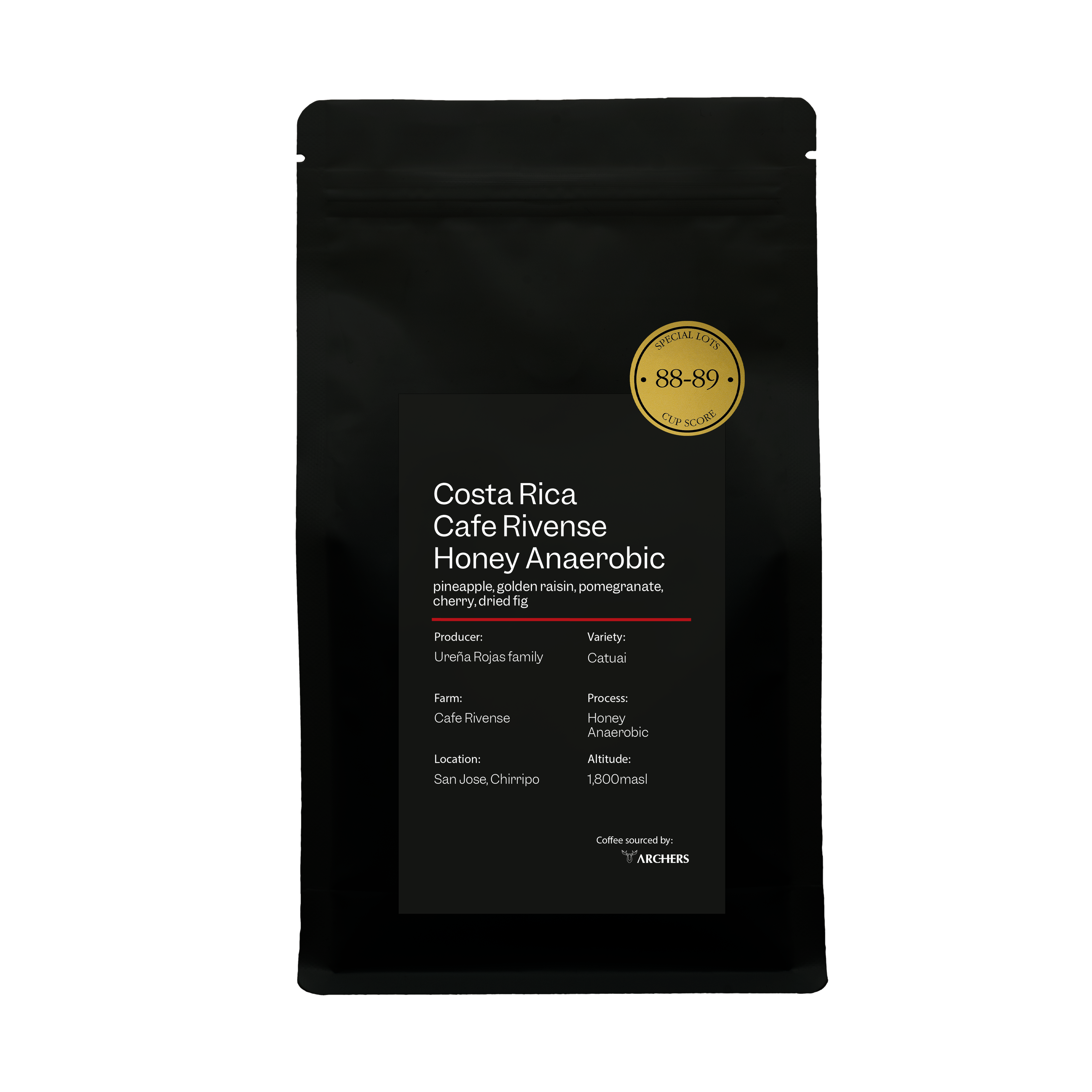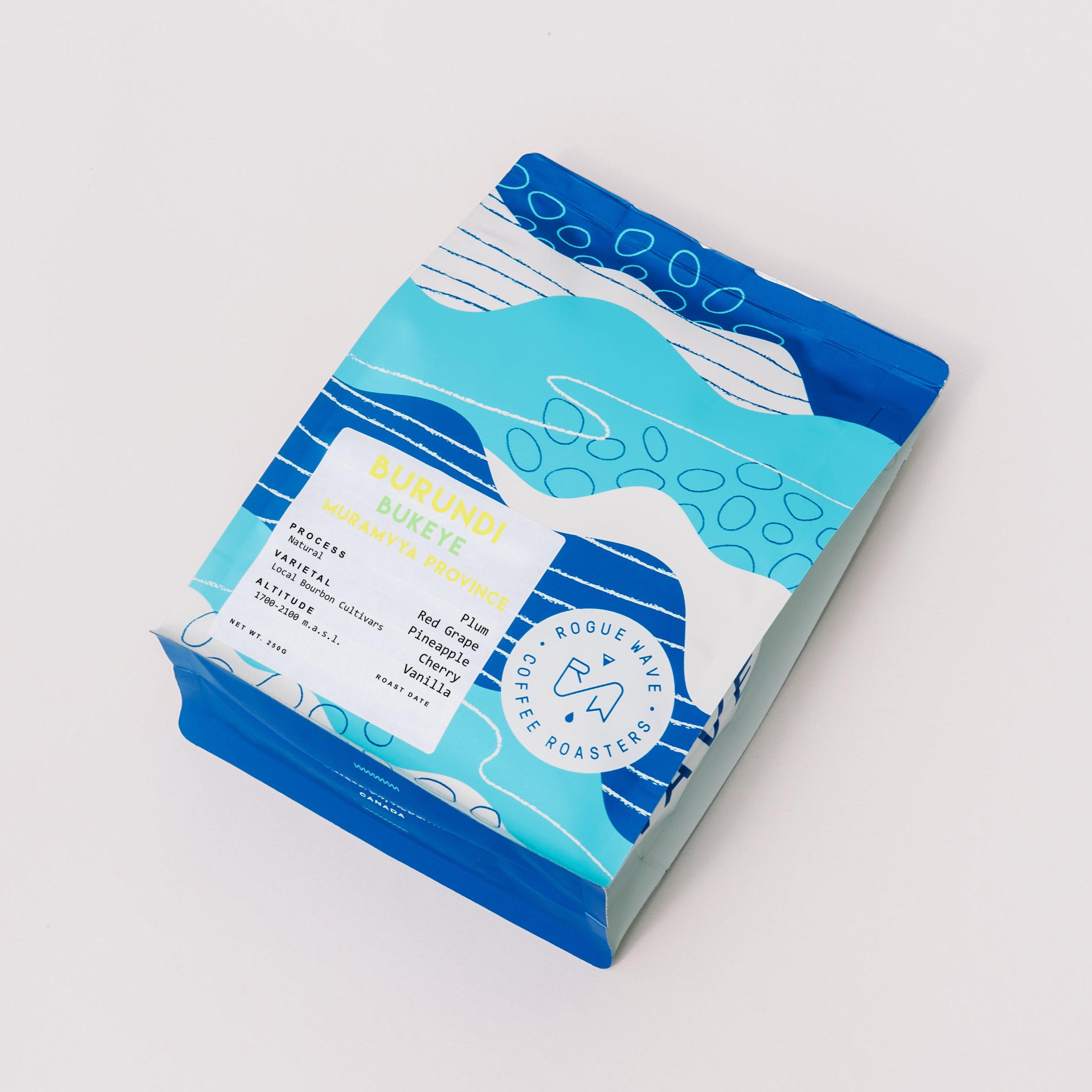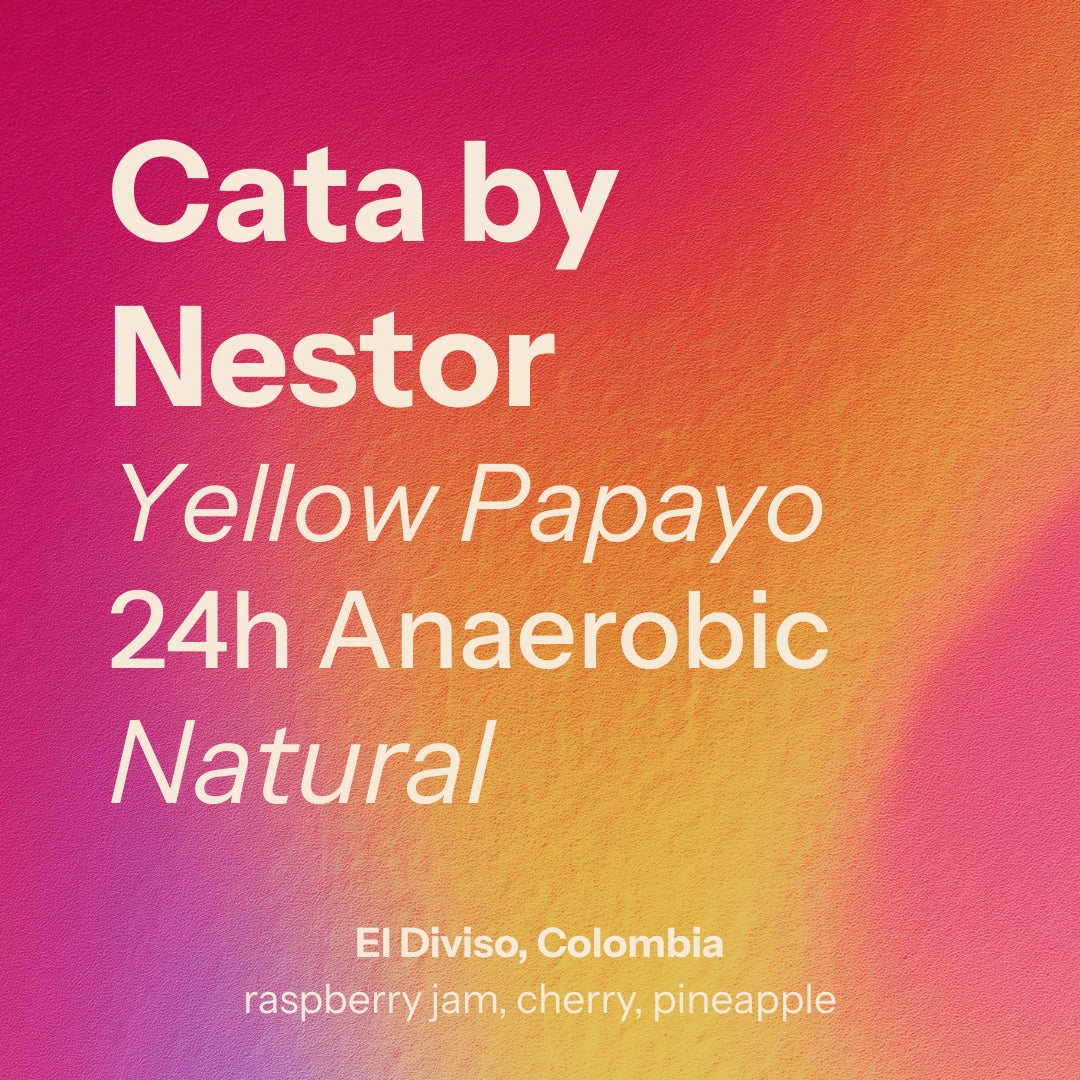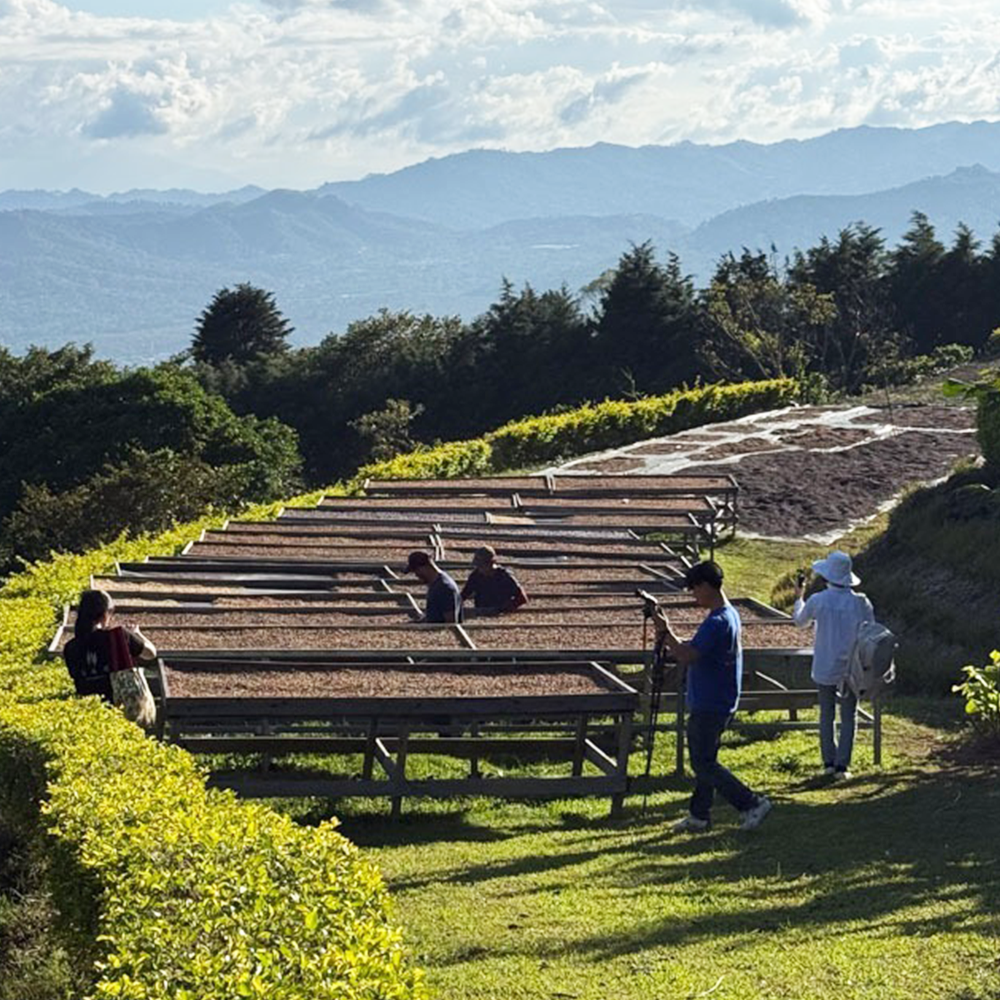
Costa Rica - Cafe Rivense Honey Anaerobic
Tasting Notes
Description
Producer: Ureña Rojas family Farm: Cafe RivenseLocation: San Jose, ChirripóVariety: CatuaiProcess: Honey AnaerobicAltitude: 1,800 maslFermentation▪▪▪▪▫Sweetness▪▪▪▪▪Acidity ▪▪▪▫▫Roast ▪▪▪▫▫The pioneering Ureña Rojas family of Café Rivense del Chirripó, led by Régulo Ureña and Isabel Rojas, broke away from the country's commercially driven mega-mill processing model in the early 2000s when they built the first micro-mill in the Upper Buenavista Catchment in the Brunca region of South Costa Rica. <br/>The move was a definite game-changer that gave them control over quality and the capacity to be creative to experiment and maximize the flavor potential of the coffees grown on their farm and their neighbors’. <br/>Brunca is one of the eight coffee-growing regions identified by the country’s national coffee institute, ICAFE. It is dubbed the last frontier in the ICAFE publication Cafe de Costa Rica: Spirit of a Nation because it is the most remote of all the eight. Within it, the Chirripó micro-region has been gaining renown as a specialty coffee origin due to its terroir. <br/>Located between the country’s two highest mountains, Cerro de la Muerte (3.491m.) and Cerro Chirripó (3.820m.), coffee farms in this area sit at high altitudes from 1300 to 2000 masl and benefit from the rich soils and biodiverse natural environment. All of these contribute to the unique microclimates that allow coffee trees to grow well and produce healthy cherries that capture the myriad flavors of the land. <br/>The remarkable quality of Chirripó coffee had been recognized at the Cup of Excellence, with a Café Rivense honey-processed Caturra ranking 5th in the 2019 competition. This recognition encouraged an increase in land planted with coffee and the cultivation of different varieties in the Chirripó micro-region, which is projected to continue for years ahead. A natural-processed Catuai from Finca Voo won 2nd Place at the 2023 Costa Rica Cup of Excellence. The process involved rinsing the coffee cherries with clean water and then directly laying them out to sun-dry on raised beds for 19 days. <br/>The Catuai began to be widely planted by coffee farmers across Costa Rica due to its proven prospects for higher yields compared to the indigenous varieties Typica and Bourbon, while delivering on the potential for good cup quality — as had been observed in earlier adopters like Guatemala and Honduras — following its introduction to the local agricultural landscape in the 1980s. Coinciding with the building momentum of the Green Revolution, which promoted an agroforestry mindset and its accompanying environment-friendly practices, Costa Rica-grown Catuai (alongside Caturra) grew in regard as a reliable and sensorially satisfactory crop. <br/>Catuai is a cultivar with Brazilian origins, having been developed by the Instituto Agronomico (IAC) in Sao Paulo, by cross mating the exceptionally productive Mundo Novo and the usefully compact Caturra. The relevance at the farm-level is that more Catuai trees can be grown in a given area because of their small stature, allowing the plants to be placed nearer to each other, for example compared to Typica and Bourbon. <br/>Their shape and height also make it physically easier to apply necessary treatments to the plants in the off-season, and at harvest season, to hand-select the properly ripe cherries, contributing to less tedious and more efficient work for the pickers. <br/>With the same process and variety that led to Café Solis y Cordero’s Top 2 finish at the 2023 Cup of Excellence, this SF 22 Lot expresses rich and ripe sweetness complemented by crisp acidity.
Origin
Purchase
Similar Beans
Based on tasting notes and processing method

Burundi - Bukeye Muramvya Province | Natural
Rogue Wave Coffee

Colombia, Cata by Nestor
Nostos Coffee

Costa Rica La Isla
Terarosa Coffee

Costa Rica La Isla (C.O.E. #6)
Terarosa Coffee